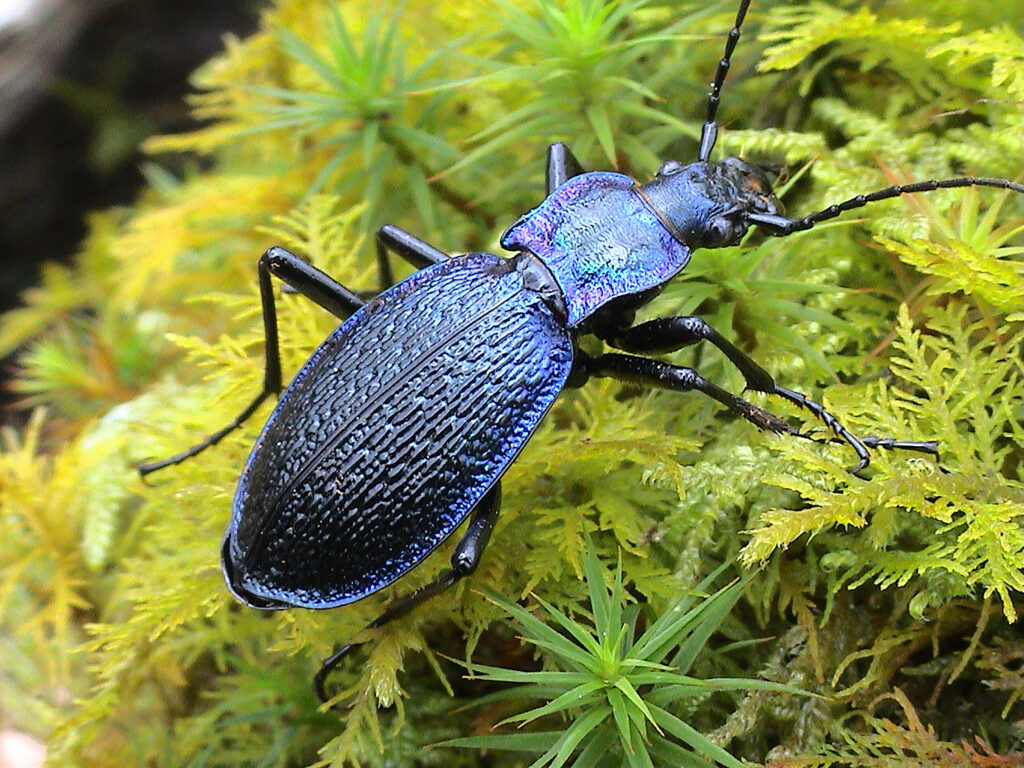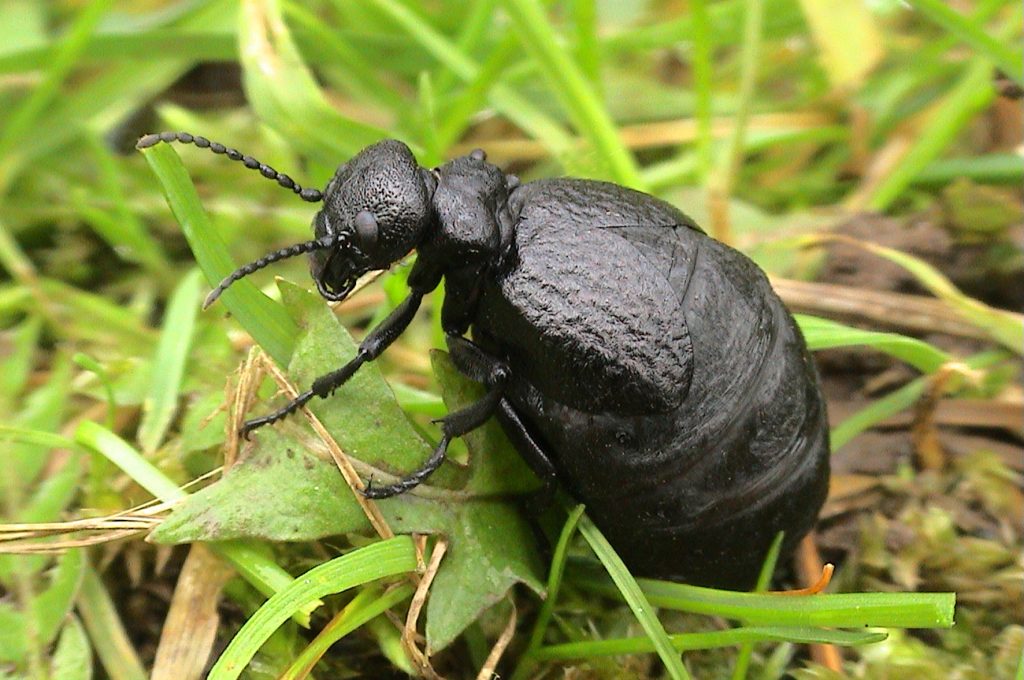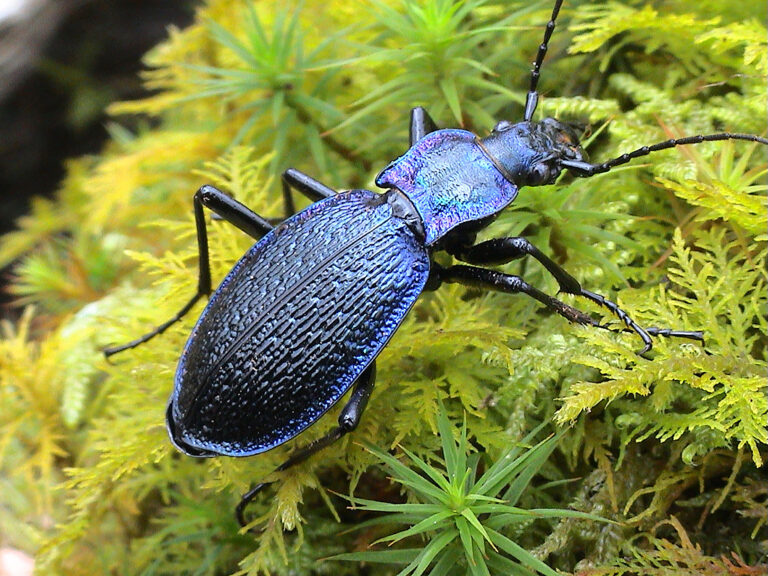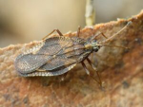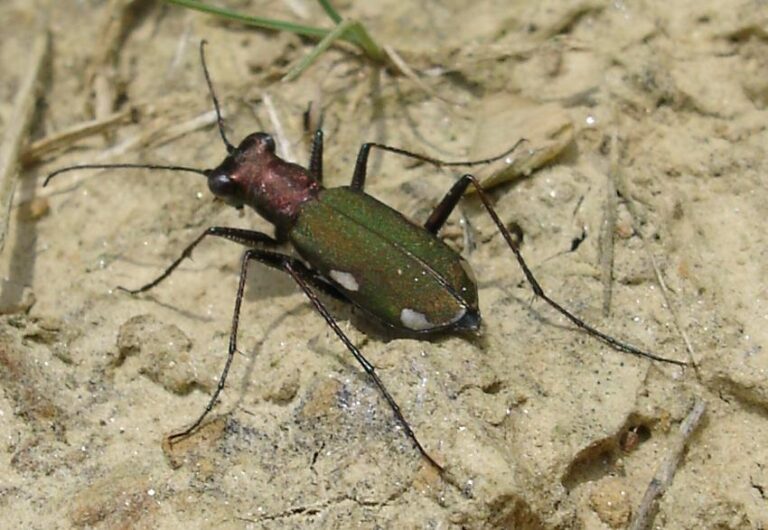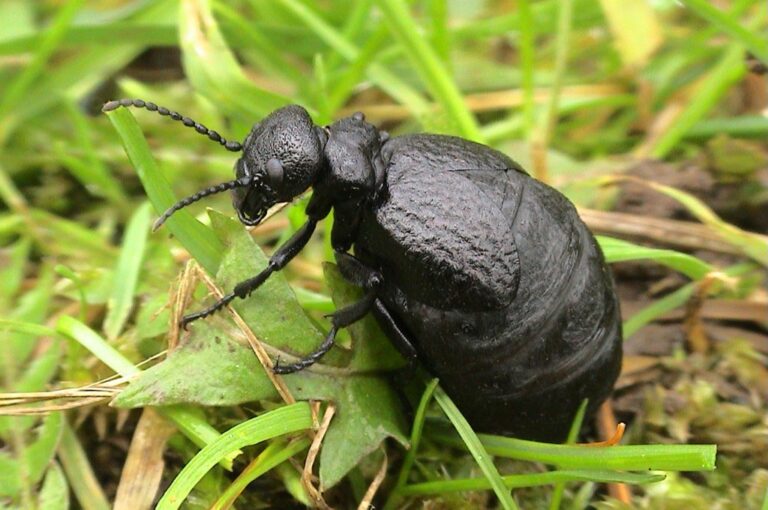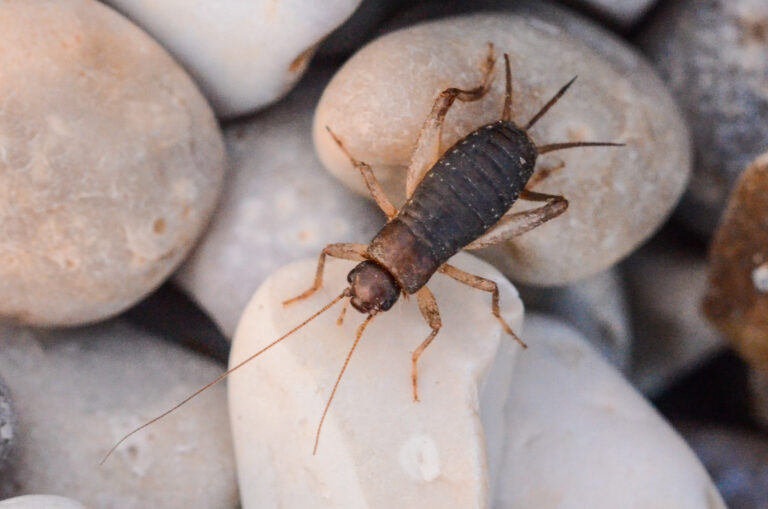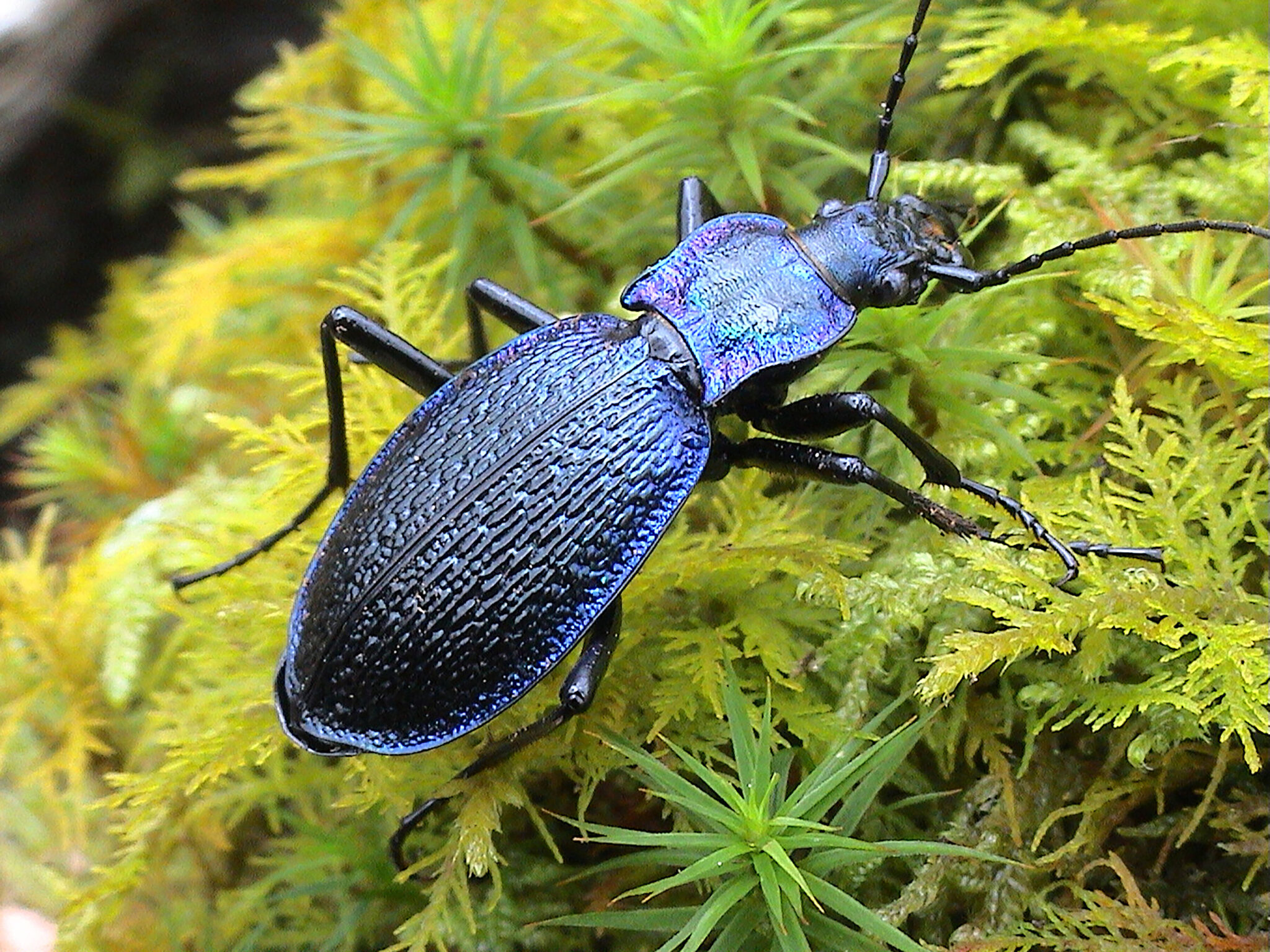This section discusses three groups of insects:
True bugs: The term ‘ bug’ is often used to describe any small insect. However there are around 2,000 speciesA group of similar organisms that can breed and exchange gen... More of insect in the UK that are formally classed as ‘true bugs’ and are in the scientific order Hemiptera. These all have piercing-sucking mouthparts to feed on sap, blood and other insects. Examples include aphids, shield bugs, lacebugs, water boatmen, pond skaters and leafhoppers.
Beetles: There are over 4,000 beetle species in the UK (the order Coleoptra), a third of all insect species. Beetles are characterised by having hardened forewings which can be clearly seen in well- known species such as ladybirds. Just a few examples are weevils, diving beetles, ground beetles, tiger beetles and dung beetles. Glow-worms are also a beetle.
Grasshoppers, crickets and groundhoppers: These are all in the insect order known as Orthoptera which is a tiny group compared to bugs and beetles. They are easy to recognise, and all have powerful hind legs adapted for jumping. In the UK, there are only 23 cricket species, 11 grasshopper species and 3 groundhopper species. 20 of these species are found in Devon (check).
Species of bugs, beetles and crickets are very diverse and are found in a wide range of habitatsThe natural environment in which an animal, plant or other o... More across Devon in rural and urban areas. Grasshoppers need sunny, grassy habitats. All species need habitats which provide food and shelter throughout the year. Most species don’t travel far and so need well connected habitats.
All are an essential food source for other wildlife (especially birds). They are also a critical part of our ecosystem providing services such as pollination, decomposition and nutrient recycling, pest control and soil formation.
X bugs, x beetles and eight grasshoppers and crickets are listed as Devon Species of Conservation Concern (see the spreadsheet for more details). Those needing particularly action or attention are identified as Devon Special SpeciesLorem ipsum dolor sit amet consectetur adipiscing. and are discussed below.
Wings: True bugs have soft, membranous wings that are thin, transparent, and often thickened at the base. Beetles have hard forewings (called elytra) that protect the delicate, membranous hindwings when the beetle isn’t flying.
Diet: True bugs are typically herbivores, whilst beetles are typically omnivores.
Mouthparts: True bugs will usually have needle-like piercing/sucking mouthparts, but beetles have chewing mouthparts (mandibles).
Life cycle: Beetles undergo complete metamorphosis (has a larval stage): egg > larva (young look nothing like the adults) > pupa (a resting stage where the larva tranforms into the adult)) > adult.
Bugs undergo incomplete metamorphosis (no larval stage): egg > nymph (mini version of adult, typically without wings) > adult.
Although they are in the same scientific order (orthoptera), grasshoppers and crickets are thought to have split more than 250 million years ago (before dinosaurs!). They look very similar having long back legs used for jumping and many the males of most ‘sing’ to attract mates by rubbing body parts together. A few key differences are:
Antennae: Grasshoppers antennae are short and stubby compared to a cricket’s longer, thinner and more segmented antennae.
Diet: Grasshoppers tend to be herbivores, crickets are omnivorous.
Time active: Grasshoppers are more active during the day, whereas crickets tend to prefer evening and night.
Ears: Grasshopper ears are on their abdomen, but crickets have ears on their knees!
Size: Grasshoppers are generally 2 – 3 cm whereas crickets vary from 1.5 – 5 cm.
Body: Grasshoppers will usually be green, brown or grey. Crickets can be different shapes and are mostly pale green or greyish brown.
Groundhoppers resemble tiny grasshoppers and can be distinguished by their extended pronotum (a shield like structure covering the abdomen) and reduced forewings.
As for bugs these species have no larval stage.

